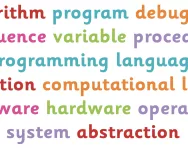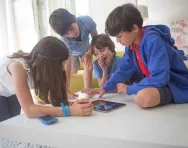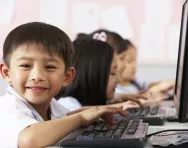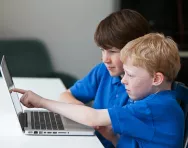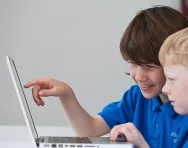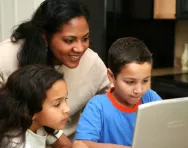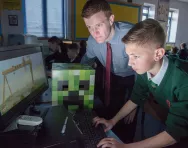Important update from TheSchoolRun
For the past 13 years, TheSchoolRun has been run by a small team of mums working from home, dedicated to providing quality educational resources to primary school parents. Unfortunately, rising supplier costs and falling revenue have made it impossible for us to continue operating, and we’ve had to make the difficult decision to close. The good news: We’ve arranged for another educational provider to take over many of our resources. These will be hosted on a new portal, where the content will be updated and expanded to support your child’s learning.
What this means for subscribers:
- Your subscription is still active, and for now, you can keep using the website as normal — just log in with your usual details to access all our articles and resources*.
- In a few months, all resources will move to the new portal. You’ll continue to have access there until your subscription ends. We’ll send you full details nearer the time.
- As a thank you for your support, we’ll also be sending you 16 primary school eBooks (worth £108.84) to download and keep.
A few changes to be aware of:
- The Learning Journey weekly email has ended, but your child’s plan will still be updated on your dashboard each Monday. Just log in to see the recommended worksheets.
- The 11+ weekly emails have now ended. We sent you all the remaining emails in the series at the end of March — please check your inbox (and spam folder) if you haven’t seen them. You can also follow the full programme here: 11+ Learning Journey.
If you have any questions, please contact us at [email protected]. Thank you for being part of our journey it’s been a privilege to support your family’s learning.
*If you need to reset your password, it will still work as usual. Please check your spam folder if the reset email doesn’t appear in your inbox.
What is a sequence in computing?
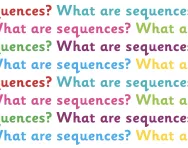
What are sequences?
Sequences are one of the key principles used in programming and they allow us to define what should happen next in an algorithm or a program.
Without sequencing everything would happen out of order and a program that we had written would not end up completing the task for which it was originally designed.


Download fantastic science resources today!
- Experiments And Science Fun pack
- Science Learning Programme for each school year
- All the instructions, questions and information you need
How children learn about sequences in KS1
In KS1 your child will be introduced to the idea of sequences used in writing algorithms.
A sequence is a series of events that must be performed in order to achieve a task.
A common example of a task given at KS1 might be to draw a character using an algorithm to show what body parts need to be added at what time. For example, you might decide to draw a circle first, which can be the body of your character. Then you might add eyes, a mouth, a nose and some limbs, before adding any extra detail such as colour or hair.
Although you could probably run these steps in a different sequence and still achieve your end goal of drawing a character, doing these steps out of order would be tricky; drawing eyes without knowing where to put them in relation to a body or face is much more difficult. Therefore, by running our algorithm in the correct sequence, we have made our task easier to complete.
Once your child has learned the basics of writing a sequence they may be asked to write some sequences of their own for basic tasks.
The concepts learned about sequences will then feed into your child's understanding of how to write an algorithm for an everyday task such as brushing your teeth.
Sequences also link to learning about debugging; having your sequence out of order will produce a computer bug. In order to find and fix the bug it is necessary to discover which step of the algorithm is out of order and work out what needs to be changed to make the algorithm run correctly.
How children learn about sequences in KS2
In KS2 the idea of sequences is developed further to explain more about the consequences of writing an algorithm with an incorrect sequence. This will often be tied into the concept of games programming where player input is used to control a character on screen. A sequence of events must occur in the correct order for a player to get their character to the end of a game level. If these events are performed out of sequence, the character will fail and the game will need to restart. Take the following example of a computer game level:
The aim of the game is to get the character on the left-hand side of the level past both the obstacles and to the end of the level, somewhere off screen to the right. The character will have to first jump over the lava pit, before rolling under the obstacle and finally reaching the end of the screen, thus completing the level. If the player tried to roll at the lava pit then they would end up failing the level and having to restart, and if the player tried to jump at the second obstacle then they would get stuck, which would cost them precious seconds if the game score were based on completion time.
Sequences in primary school: what your child learns year-by-year
Please note that the following guidelines for what is taught in each primary year is for guidance only and may not be representative of the way computing is taught at your child’s school.
Year 1
Basic sequences for completing tasks such as drawing a character are introduced.
Year 2
Students are asked to develop their own sequences for everyday tasks such as putting a coat on.
Year 3
The concept of sequences is linked to debugging and students learn to debug algorithms into the correct order.
Year 4
Students start to write algorithms using sequences in a visual programming language such as Scratch.
Year 5
Students learn that algorithms in different sequences can still achieve the same task (for example, adding milk before sugar when making a cup of tea).
Year 6
Sequences will be tied in to using loops and conditions to create complex algorithms.
